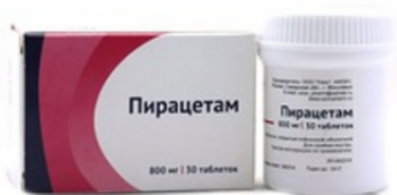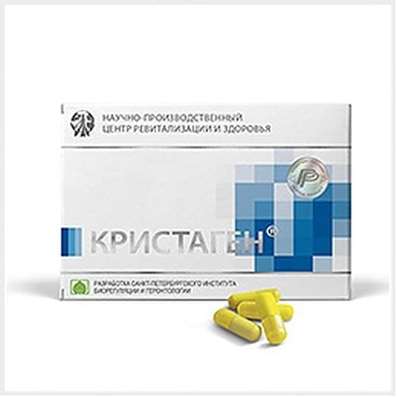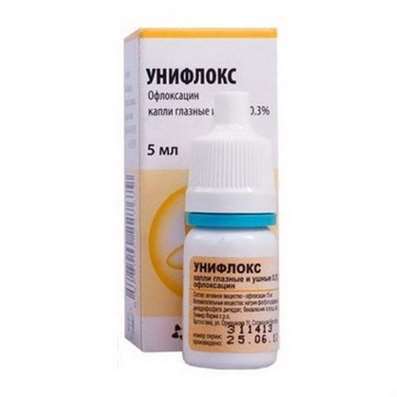Instruction for use: Acetylsalicylic acid + Caffeine + Paracetamol (Acidum acetylsalicylicum+Coffeinum+ Paracetamolum)
I want this, give me price
Pharmacological groups
NSAIDs - Salicylic acid derivatives in combinations
Nosological classification (ICD-10)
G43.9 Migraine, unspecified
Migraine, Acute migraine attack
K08.8.0 * Painful toothache
Dentinal pain, Dentinal pains, Pain pulpitis, Anesthesia in dentistry, Pain syndromes in dental practice, Pain after removal of tartar, Pain when extracting a tooth, Toothache, Pain after dental interventions
M25.5 Pain in the joint
Arthralgia, Pain syndrome in musculo-articular diseases, Pain syndrome in osteoarthritis, Pain syndrome in osteoarthritis, Pain syndrome in acute inflammatory diseases of the musculoskeletal system, Pain syndrome in chronic inflammatory diseases of the musculoskeletal system, Pain in the joints, Soreness of the joints, Soreness of joints in severe physical exertion, Painful inflammatory joint damage, Painful conditions of the musculoskeletal system, Painful joint conditions, Painful traumatic affection of joints, Pain in the musculoskeletal system, Pain in Shoulder Joints, Pain in the joints, Joint pain, Joint pain with injuries, Musculoskeletal pain, Pain with osteoarthritis, Pain in the pathology of the joints, Pain in rheumatoid arthritis, Pain in chronic degenerative bone diseases, Pain in chronic degenerative joint diseases, Bone-joint pain, Joint pain, Arthritic pain of rheumatic origin, Articular pain syndrome, Joint pain, Rheumatic pain, Rheumatic pains
M79.1 Myalgia
Myofascial pain syndromes ,Pain syndrome in musculo-articular diseases, Pain syndrome in chronic inflammatory diseases of the musculoskeletal system, Pain in the muscles, Tenderness of muscles, Muscular soreness in severe physical exertion, Painful conditions of the musculoskeletal system, Pain in the musculoskeletal system, Pain in the muscles, Pain at rest, Muscle aches, Muscle pain, Musculoskeletal pain, Myalgia, Muscle pain, Muscle pain at rest, Muscle pain, Muscular pain of non-rheumatic origin, Muscle pain of rheumatic origin, Acute muscle pain, Rheumatic pain, Rheumatic pains, Myofascial syndrome, Fibromyalgia
M79.2 Neurology and neuritis, unspecified
Pain syndrome with neuralgia, Brachialgia, Occipital and intercostal neuralgia, Neuralgia, Neuralgic pain, Neuralgia, Neuralgia of intercostal nerves,Neuralgia of the posterior tibial nerve, Neuritis, Neuritis traumatic, Neuritis, Neurological Pain Syndromes, Neurological contractures with spasms, Acute neuritis, Peripheral neuritis,Post-traumatic neuralgia,Severe pain of a neurogenic nature, Chronic neuritis, Essential neuralgia
N94.6 Dysmenorrhea Unspecified
Pain during menstruation, Functional disorders of the menstrual cycle, Menstrual cramps, Emmeniopathy, Pain during menstruation, Painful menstrual irregularities, algomenorrhea, algomenoreya, Pain smooth muscle spasm, Pain spasm of smooth muscles (renal and biliary colic, intestinal spasms, dysmenorrhea), Pain spasm of smooth muscles of internal organs (kidney and biliary colic, intestinal spasms, dysmenorrhea), Disalgomenoreya, dysmenorrhea, Dysmenorrhea (essential) (Exfoliative), menstrual disorder, menstruation painful, metrorrhagia, Violation of the menstrual cycle, Menstrual irregularities, Prolaktinzavisimoe menstrual disorders, Prolaktinzavisimoe menstrual dysfunction, Pain spasm of smooth muscles of internal organs, Spasmodic dysmenorrhea, Primary disalgomenoreya
R50 Fever of unknown origin
Malignant hyperthermia, Hyperthermia malignant
R51 Headache
Pain in the head, Cephalgia, Pain with sinusitis, Pain in the back of the head, Painful headache, Headache of vasomotor genesis, Headache of vasomotor origin, Headache with vasomotor disorders, Headache, Neurological headache, Serial headache
R52.9 Unspecified Pain
Pain after cholecystectomy, Pain shooting, Non-malignant pain, Obstetric and gynecological pain, Pain syndrome, Pain in the postoperative period, Pain in the postoperative period after orthopedic surgery, Pain of inflammatory genesis, Pain than cancer genesis, Pain syndrome after diagnostic procedures, Pain after surgery Diagnostic, Pain after surgery, Pain after orthopedic surgery, Pain after injuries, Pain after the removal of hemorrhoids, Pain at the non-rheumatic inflammation of nature, Pain in inflammatory lesions of the peripheral nervous system, Pain in diabetic neuropathy, Pain in acute inflammatory diseases of the musculoskeletal system, Pain when the tendon pathology, Pain smooth muscle spasm, Pain spasm of smooth muscles (renal and biliary colic, intestinal spasms, dysmenorrhea), Pain spasm of smooth muscles of internal organs, Pain spasm of smooth muscles of internal organs (kidney and biliary colic, intestinal spasms, dysmenorrhea), Pain in trauma syndrome, Pain with injuries and after surgical interventions, Pain in chronic inflammatory diseases of the musculoskeletal system, Pain with duodenal ulcer, Pain syndrome in gastric ulcer, Pain syndrome in gastric ulcer and duodenal ulcer, pain, Pain during menstruation, pain syndromes, painful condition, Painful foot fatigue, Sore gums when wearing dentures, Soreness of the cranial nerves exit points, Painful menstrual irregularities, Painful dressings, Painful muscle spasm, Painful teeth growth, Melosalgia, Pain in the area of the surgical wound, Pain in the postoperative period, Pain in the body, Pain after diagnostic procedures, Pain after orthopedic surgery, Pain after surgery, The pains of the flu, Pain in diabetic polyneuropathy, Pain for burns, Pain during sexual intercourse, Pain during diagnostic procedures, Pain during therapeutic procedures, for colds Pain, Pain in sinusitis, Pain in trauma, Pain traumatic, The pain in the postoperative period, Pain after diagnostic procedures, The pain after sclerotherapy, Pain after surgery, postoperative Pain, Pain postoperative and posttraumatic, posttraumatic pain, Pain when swallowing, Pain in infectious and inflammatory diseases of the upper respiratory tract, The pain of burns, The pain in traumatic muscle injury, Pain in trauma, The pain of tooth extraction, The pain of traumatic origin, Pain caused by spasm of smooth muscles, Expressed pain syndrome, Expressed pain syndrome, traumatic origin, Postoperative pain, Post-traumatic pain, Post-traumatic pain syndrome, Torpid pain, Traumatic pain, Traumatic pain, Mild pain, Moderately severe pain, Moderate pain, Polyarthralgia with polymyositis
Pharmacotherapy
Combined drug. ASA has antipyretic and anti-inflammatory effect, relieves pain, especially caused by the inflammatory process, and also moderately inhibits platelet aggregation and thrombosis, improves microcirculation in the inflammatory focus. Caffeine increases the reflex excitability of the spinal cord, excites the respiratory and vasomotor centers, dilates the blood vessels of skeletal muscles, brain, heart, kidneys, reduces platelet aggregation; reduces drowsiness, a feeling of fatigue, increases mental and physical performance. In this combination, caffeine in a small dose has practically no stimulating effect on the CNS (central nervous system), but it contributes to the normalization of the vascular tone of the brain and the acceleration of blood flow. Paracetamol has analgesic, antipyretic and extremely weak anti-inflammatory effect, which is due to its influence on the center of thermoregulation in the hypothalamus and a weak ability to inhibit the synthesis of Pg in peripheral tissues.
Indications
Pain syndrome of mild and moderate severity (of various origins): headache, migraine, toothache, neuralgia, myalgia, arthralgia, algodismenorea. Feverish syndrome: with acute respiratory disease (ARI), influenza.
Contraindications
Hypersensitivity; erosive and ulcerative lesions of the gastrointestinal tract (gastrointestinal tract) (in the phase of exacerbation), gastrointestinal bleeding; bronchial asthma, urticaria or acute rhinitis triggered by the use of ASA or other NSAIDs (non-steroidal anti-inflammatory drugs); hemophilia, hemorrhagic diathesis, hypoprothrombinemia, portal hypertension; avitaminosis K; kidney failure; pregnancy (I and III trimesters), lactation period; deficiency of glucose-6-phosphate dehydrogenase, severe arterial hypertension, severe course of IHD, glaucoma, increased excitability, sleep disturbances; surgical interventions accompanied by bleeding, children's age (up to 15 years - the risk of developing Reye's syndrome in children with hyperthermia on the background of viral diseases).
Carefully
Gout, liver disease.
Dosing
Inside (during or after a meal), 1 tablet every 4 hours, with a pain syndrome - 1-2 tablets; the average daily dose is 3-4 tablets, the maximum daily dose is 8 tablets. The course of treatment is no more than 7-10 days.
The drug should not be taken more than 5 days as an analgesic drug (medicinal product) and more than 3 days - antipyretic (without appointment and supervision by a doctor). Dr. Dosages and regimens are prescribed by the doctor.
Side effect
Gastralgia, nausea, vomiting, hepatotoxicity, nephrotoxicity, erosive-ulcerative lesions of the gastrointestinal tract, allergic reactions (including Stevens-Johnson syndrome, Lyell), tachycardia, increased blood pressure, bronchospasm.
With prolonged use - dizziness, headache, visual disturbances, tinnitus, reduced platelet aggregation, hypocoagulation, hemorrhagic syndrome (epistaxis, bleeding gums, purpura, etc.), kidney damage with papillary necrosis; deafness; Reye's syndrome in children (hyperpyrexia, metabolic acidosis, disorders of the nervous system and psyche, vomiting, liver dysfunction).
Overdose
Symptoms (caused by ASA): with light intoxication - nausea, vomiting, gastralgia, dizziness, ringing in the ears; severe intoxication - retardation, drowsiness, collapse, convulsions, bronchospasm, shortness of breath, anuria, bleeding. Initially, central hyperventilation of the lungs leads to respiratory alkalosis (dyspnea, choking, cyanosis, sweating). With increasing intoxication, progressive paralysis of respiration and dissociation of oxidative phosphorylation cause respiratory acidosis.
Treatment: continuous monitoring of CBS and electrolyte balance; depending on the state of metabolism - the introduction of sodium bicarbonate, sodium citrate or sodium lactate. Increased reserve alkalinity increases the excretion of ASA due to alkalinization of urine.
Interaction
Strengthens the action of heparin, indirect anticoagulants, reserpine, steroid hormones and hypoglycemic drugs.
Simultaneous administration with other NSAIDs, methotrexate increases the risk of side effects.
Reduces the effectiveness of spironolactone, furosemide, hypotensive drugs, as well as antidotal drugs that promote the excretion of uric acid.
Barbiturates, rifampicin, salicylamide, antiepileptic drugs, etc. stimulators of microsomal oxidation contribute to the formation of toxic metabolites of paracetamol, which affect liver function.
Metoclopramide accelerates the absorption of paracetamol.
Under the influence of paracetamol T1 / 2 chloramphenicol increases by 5 times. With repeated admission, paracetamol can enhance the effect of anticoagulants (dicumarin derivatives). Simultaneous reception of paracetamol and ethanol increases the risk of hepatotoxic effects.
Caffeine accelerates the absorption of ergotamine.
Special instructions
Children should not be prescribed drugs containing ASA, since in the case of a viral infection they can increase the risk of developing Reye's syndrome. Symptoms of Reye's syndrome include prolonged vomiting, acute encephalopathy, and enlargement of the liver.
With continued use of the drug, control of peripheral blood and the functional state of the liver is necessary.
Because ASA slows blood clotting, the patient, if he is to undergo surgery, must warn the doctor in advance about taking the drug.
Patients with hypersensitivity or with asthmatic reactions to salicylates or their derivatives ASA can be prescribed only with special precautions (in emergency services).
ASA in low doses reduces the excretion of uric acid. In patients with a corresponding predisposition, this can in some cases provoke a gout attack.
During treatment should be abandoned the use of ethanol (increased risk of gastrointestinal bleeding).
ASA has a teratogenic effect; when applied in the first trimester leads to a developmental defect - splitting of the upper palate; in the third trimester - to inhibition of labor (inhibition of Pg synthesis), to the closure of the arterial duct in the fetus, which causes hyperplasia of the pulmonary vessels and hypertension in the vessels of the small circle of blood circulation.
Isolated with breast milk, which increases the risk of bleeding in the child due to impaired platelet function.

 Cart
Cart





